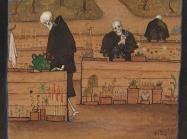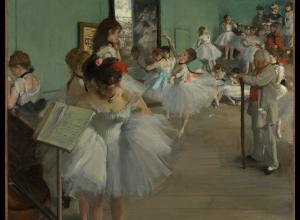
The Roman Empire, at its peak, was a vast territory that controlled over five million square kilometers and anywhere from 56 to 79 million people from an incredibly diverse array of cultural backgrounds.
Stretching from the British Isles down to Northern Africa, across the Mediterranean to the Persian Gulf and the Caspian Sea, it presided over territories that today house some of the world’s major metropolises including London and Paris.
While Italy and Greece are often the first countries that come to mind when thinking about the ancient Romans, the empire had one of the largest global imperial footprints in history. Here, Art & Object takes a look at five extraordinary cities that have evidence of the ancient Roman Empire that you can still visit today.

London was first settled by invading Roman forces not long after the Claudian conquest of 43 CE. Due to the city’s location upon the River Thames, London (or Londinium in Latin) quickly became a buzzing commercial center for the Roman conquest and later the province of Britannia. Around 60-61 CE, Boudica, the famous last Queen of the indigenous Iceni tribe, brought her army to the city and razed it to the ground, however, recent archaeological discoveries have shown that the city was relatively quick to bounce back after this destruction and London continued to serve as an incredibly important node in the larger chain of social and commercial networks within the province. By the second century CE, the population of London is estimated to have reached around 60,000 people. Roman London remained a critical and bustling city within the Empire until the 5th century when it began to experience decline and eventual large-scale abandonment. The area within the Roman era walls was once again resettled between the 7th and 10th centuries.

Though the Iron Age tribe of the Parisii are known to have been in the area during the 3rd century BCE, the Roman settlement of Lutetia is considered the ancient predecessor to modern-day Paris. Located on the western banks of the Seine, the Roman city Lutetia Parisiorum was established during the 1st century BCE. Though it was not the capital of its province, Gallia Lugdunensis, Roman Paris served as an important commercial post within the Empire providing a vital intersection between land and water-based trade routes. The city flourished up through the 2nd century CE and soon included a bustling forum, an amphitheater, public baths, and a theater. The city has been continuously occupied since this Roman founding.

Originally founded as a Latin colony sometime around 152 BCE, Roman Córdoba would eventually be called home by many illustrious Romans. Though small at first, the city eventually rose to the status of colonia between 46 and 45 BCE (Colonia Patricia), the highest and most important status a Roman city could achieve politically. In the Augustan period it was designated as the capital of its province, Hispania Baetica, and boasted a grand forum and many important temples. The philosopher Seneca the Younger as well as his father, the famous orator, Seneca the Elder, both hailed from the Córdoba, as did the poet Lucan.

Called Turicum in Latin, Roman Zürich is estimated to have been settled sometime around 15-20 CE. Though the area around Lake Zürich has provided evidence of human activity dating back into the 3rd millennium BCE, modern-day Zürich traces its origins to the Roman city that lies beneath the present Altstadt. In its earliest rendition, the Romans used Zürich as a tax collection and commercial point of interest for goods and currency coming from the northern provinces down into Italy. An unwalled garrison and smattering of villas made up the majority of the city. As the city grew later into the 2nd and through the 4th century, more impressive structures were added to the city such as baths, a temple to Jupiter, and a large citadel atop the Lindenhof hill.

Settled as a military outpost at the Empire’s border along the Danube, Roman Vienna (Vindobona) played an important role in Rome’s defensive network along its eastern frontiers. The first traces of the legionary fortress were constructed around 100 CE and it would grow to cover an area of about 20 hectares, housing some 6,000 soldiers. The area around the fort steadily grew to include many estates (villae rusticae) and Vindobona soon became a commercial and agricultural center. The city experienced difficulties with invading forces from the East during the mid-5th century CE and was abandoned for a few centuries until being resettled once more during the Middle Ages. Much of the city’s post-Roman construction followed the older Roman structures and organization, and even many modern streets trace the same paths laid out millennia ago.
Danielle Vander Horst
Dani is a freelance artist, writer, and a trained archaeologist. Her research specialty focuses on religion in the Roman Northwest, but her educational background encompasses more broadly Greek and Roman art, architecture, materiality, and history. She holds multiple degrees in Classics and Archaeology from the University of Rochester, Cornell University, and Duke University, and she is currently completing a PhD in History of Art & Archaeology at Cornell University.


















![DEl Kathryn Barton [Australian b. 1972] the more than human love , 2025 Acrylic on French linen 78 3/4 x 137 3/4 inches 200 x 350 cm Framed dimensions: 79 7/8 x 139 inches 203 x 353 cm](/sites/default/files/styles/image_5_column/public/ab15211bartonthe-more-human-lovelg.jpg?itok=wW_Qrve3)




